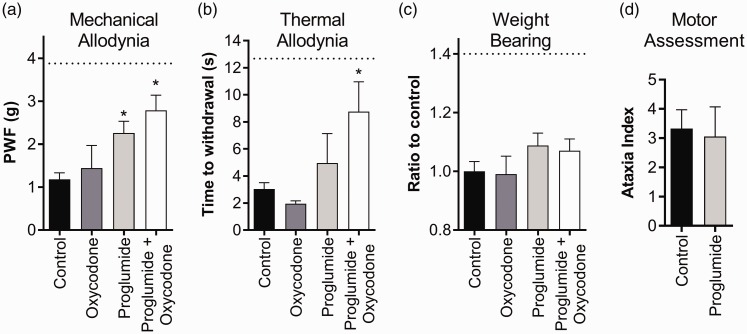Figure 5.
Analgesic activity of the CCK antagonist proglumide in burn-induced pain, both alone and in combination with a low-dose opioid. (a) Both proglumide (30 mg/kg) alone and proglumide (30 mg/kg) in combination with oxycodone (1 mg/kg) significantly alleviated burn-induced mechanical allodynia. (b) Proglumide (30 mg/kg) alone had no significant effect on burn-induced thermal allodynia; however, thermal allodynia was significantly reversed when administered in combination with oxycodone (1 mg/kg). (c) Neither proglumide (30 mg/kg) alone nor proglumide (30 mg/kg) in combination with oxycodone (1 mg/kg) significantly improved weight bearing behaviour of the ipsilateral hind paw, as detected by the ‘Mean Intensity of the 15 most intense pixels’ parameter using the Catwalk XT. (d) Proglumide (30 mg/kg) had no significant adverse effect on motor behaviour as assessed by the parallel rod floor test. The same mice were used for each of the behavioural tests. Statistical significance was determined using t-test, *P < 0.05 compared to vehicle control. Dotted lines represent the mean value for the contralateral paw. All data are represented as mean ± SEM with 4–8 mice per group.

